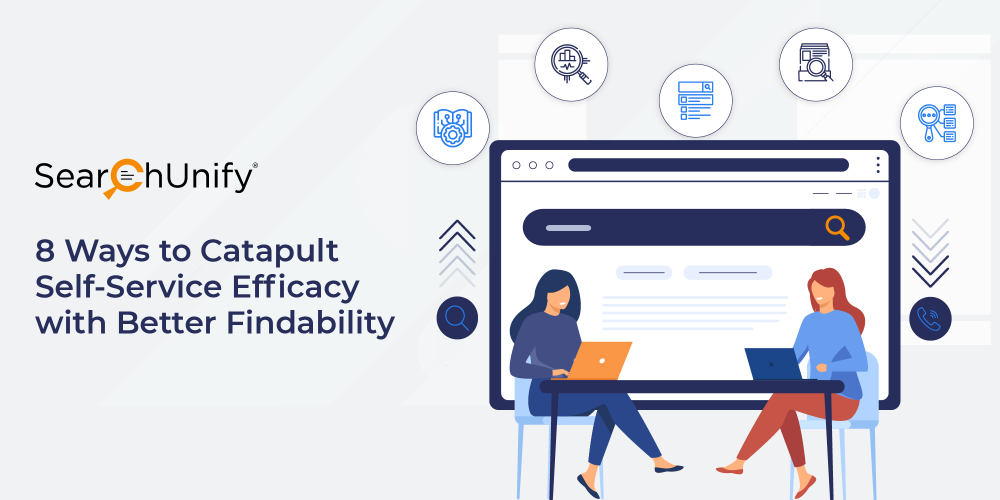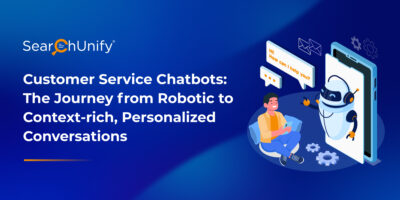
As a customer, we’re past waiting on the phone to get support, aren’t we? Perhaps this is why a lot of people are turning to self-service channels to look for answers. Consequently, the traffic on the digital ‘non-voice’ channels increases significantly.
Businesses understand the part self-service plays in their customer support & experience strategies. Virtual tools–including chatbots, online communities, documentation portals, and social media channels–take some load off their costly contact center. However, these mediums aren’t the silver bullet that organizations perceive them to be.
What many fail to realize is that an awful lot of customers find the self-service channels quite cumbersome. When the self-service process fails, it doesn’t just increase the burden on your agents but also degrade customers’ trust in your company.
“A poorly implemented self-service customer support system can lead to frustration and irreparable damage to the brand,” says Vivek Lakshman, VP for Chatlets.ai.
Let’s understand why the humble self-service offerings of today fail to deliver.
1. Missing Information
While omnichannel self-service is all the rage right now, customers can seldom access the KBs available to the support engineers. So, the answers often don’t exist on these virtual channels. Even agents seem to agree with it.
66% of agents opine that the information & answers the customer call about are not available online. – ContactBabel
2. Poor Discoverability
Even when helpful content does exist, finding it is quite an ordeal. It is often tucked away in the labyrinths of navigation and gateways.
62% of agents say that they receive calls about issues that can be resolved online, but customers are unable or unwilling to do so. – ContactBabel
3. Lack of Relevance
Having knowledge articles is one thing, but can people find it? Customers expect highly personalized and relevant content upon every search. Fail on that front, and your self-service channels will get tagged as terrible in no time. Once that happens, the customers rarely try to self-serve again.
31% of agents say that less than one-in-ten people tried using the self-service channels before contacting support. – ContactBabel
4. Immediacy
Customer expectations from online interactions are sky-high. But, communities & documentation centers often fail to answer, live agents (chat) take out speed from the equation, and so on. No wonder customers abandon these channels.
46% of support leaders say that their current tech stack holds them back from achieving their goals. – Intercom
This is just the tip of the iceberg. If you look closely, you’ll observe that poor findability sits at the heart of an awful lot of issues. Fix that, and most of these hurdles will disappear. But how? Well, there’s no better way to hit the findability home run than search.
Enter Self-Service feat. Intelligent Search
Customer service is one vertical loaded with data. This data, however, is unstructured and incoherent. But businesses need to make sense of this data to drive maximum value from their self-service investments.
What if there was a way to utilize this data? What if all the self-service and support channels could actively share data and learn from one another to deliver a consistent and relevant experience? That brings us to the territory of intelligent search.
Let’s see how it helps make the self-service experience more human-like and reliable:
1. Searching Across Silos
Most self-service channels operate in silos. An intelligent search engine creates a unified index of all repositories so that a single search request scans them all. This ensures existing content surfaces at the point of search.
2. Understanding Query
Next, you need to ensure that the self-service channels understand what the customers want. Traditional search interfaces merely match keywords and deliver results. But an intelligent search solution takes it to the next level by using natural language processing (NLP) to extract intent and understand the context behind the search query. Naturally, the results are more in line with what the customer expects.
3. Delivering Relevant Results
Once that’s off your list, you need to deliver relevant results. To make it happen, intelligent search uses machine learning to extrapolate what matters to the customer alongside the information that other users with similar queries found beneficial. Then, it personalizes the results based on the user’s intent, behavioral data, purchase history, etc.
4. Simplifying Optimization
There’s no better way to deliver relevant information than letting customers define its scope on their own. Intelligent Search comes with filters and facets that enable customers to take charge of their experience. This not only allows them to fine-tune the results but also personalizes the self-service experience.
5. Learning from Every Interaction
Every customer journey generates data. If you keep tabs on them, you can extract insights like which content converts the most, how people find or engage with it, and so forth. Intelligent search solutions use an insights engine to generate actionable intelligence. Some solutions even go on to infuse AI & natural language generation (NLG) capabilities to suggest steps that further elevate the self-service experiences.
Furthermore, the insights engine also helps you become more proactive. Since it has complete access to the user’s previous interactions and purchase history, the engine can predict what kind of challenges they might come across in the future. This awareness helps it provide content recommendations and notifications that nip the doubts in the bud.
“An issue that a customer may be having now can often be traced back to a problem they had in the past. Having this information easily retrievable will help you demonstrate to the customer that they aren’t just another support ticket,” says Benjamin Lawlor, Principal Customer Support Specialist at HubSpot.
6. Enhancing Presentation
Once every digital nook & cranny has been scanned and relevant knowledge found, it’s imperative to present it in a way that fuels consumption. To that end, intelligent engines use a variety of nifty features to augment information discovery. Rich snippets identify the relevant part from content and display it as a featured result. On top of that, you have knowledge graphs that present all the related information to the user.
7. Improving Content Classification
Standard search engines need to be spoon-fed taxonomies so that they can associate keywords with a particular content classification. Intelligent search doesn’t need that. It can dynamically create its ontologies and taxonomies. On top of that, it can add contextual data to the mix for a more immersive and accurate self-service engagement.
8. Bridging Content Gaps
Perfection is not a state; it’s a journey. No matter how impeccably your self-service avenues perform, there will be instances where they fail to deliver. Intelligent search engines instantly identify and highlight them thus, enabling you to keep your self-help portals in pristine condition.
The Bottomline
Today’s support teams juggle with many priorities: meeting customer expectations, delivering the highest levels of efficiency, demonstrating ROI, etc. Business leaders are looking for ways to balance them at scale.
They’re also leveraging technology to ameliorate self-help. The intelligent search helps rewrite the old support playbook and put in place a more potent self-service model that’s smarter, faster, and more engaging.
But is it right for you? How to choose the best one? If you have questions like this in your mind, I’d recommend taking a quick look at this ebook. It discusses AI-powered search at length and various considerations that will steer you to self-service success.


















